If you’re new to Togo Goes or if you’ve not been reading lately, you may want to go back and catch up (see links, below). Daddy tested my DNA a couple of years ago and we learned that I am a mixture of five great breeds. This is the fourth installment of my intensive research into those who walked before me. In Part 1, I told you about the biggest part of me — the Siberian Husky (29.3%). In Part 2, I shared my similarities to the Alaskan Malamute (25.7%). Part 3 held a pretty big surprise. Who knew that I have a fair amount of Labrador Retriever (24.5%) walking around inside of me?
This week, my ancestral reveal should be no great surprise. And not necessarily because it’s entirely evident. But because all dogs, at some point in their lineage, harken back to the wolf. I just happen to be measurable in that regard. The Gray Wolf is 11.1% of who is me.
In fact, my wolfiness is high enough that the scientists who tested my DNA didn’t provide all of the report that Daddy paid for. There was supposed to be a section that identifies my relatives from recent generations. It was blank except for an explanation that the information was withheld. Daddy says that is a good policy and thinks the scientists are really smart. He told me that some people might want to exploit my wolfiness — and that of my kin. And since the wolfy part of me comes with certain features, it’s probably best not to let me and my cousins get together. Many people who think they would like to have a wolf as a pet do not understand what they are getting in to.
I’m a people-loving, all-around good natured boy. However, all dogs (and people, for that matter) have a tendency to act differently when they get together. It’s called the “pack mentality.” In people, it causes things like unexplainable impulse-buying of Blue Bell’s Dr Pepper Float Ice Cream and, apparently, storming government buildings.
In dogs, the pack mentality is a cooperative venture to hunt. And in big dogs and wolves, the combined energy and know-how allows the pack to target large animals. Daddy says that is a natural thing. It does cause problems when those large animals belong to farmers and ranchers. And that’s why in many areas, wolves became scarce as people tried to eliminate them.
Now, before you get worried about me, you should know that the wolf part of me is overshadowed by the Siberian Husky, Alaskan Malamute, and Labrador Retriever in me. Even wolves are highly social animals, although primarily social within their own families.
My family is Daddy, Momma, and my two human brothers — although I have expanded that to include others who act like family. You should know that I have a high suspicion of other dogs and will respond ferociously if I think that one is a threat to me or my family. That’s why, if you see me walking Daddy, you will notice that we are careful to stay away from other dogs. I’ve never provoked a confrontation, but I have shown my willingness to protect my family with incredibly deep barks and snarls. I also lunge a bit for theatrical effect.
I was a gift to Momma and Daddy. They were a little surprised on our first visit to Dr. Jim, my first veterinarian. (Dr. Jim introduced himself as a small animal repairman. We loved Dr. Jim!) On putting me up on a cold, stainless steel examining table, his first words were, “You know this is a wolf, don’t you?”
Momma and Daddy did not know that. Daddy, thinking about the cost of dog food, immediately asked how big I might get. Dr. Jim simply cited the facts. Male Gray Wolves have been known to reach 175 pounds although most are closer to 90 pounds. Daddy did a few calculations in his head. He tells me that the frown on his face was because he was seeing his retirement nest egg being nibbled — no, gobbled — away.
The good news is that the largest part of me is not Gray Wolf and by the time I was fully grown I settled in at the 75 to 80 pound mark.
The wolf is the largest member of the Canidae (dog) family. They are relatively slender and very powerful. I get my long legs from my wolf ancestor. Those legs make me fast and have proven helpful on the rare occasions that we have snow in West Texas. Not that it matters, since I never go out of my yard without a leash on Daddy so that he won’t get lost. And his legs are incredibly short and he is understandably slow. And doesn’t like snow.
My fur coat and coloring is very wolf-like. Most North American wolves are the same color as me and have similar white undercoats and brown, gray, and black guard hairs. Just like me and the huskies and the malamutes, wolves can be very comfortable in cold climates. They are known to be able to rest comfortably in -40º weather by curling up in a ball, placing their faces between their rear legs and covering their faces with their tails. I do that, too, even in warmer temperatures. It’s a very comfortable position. You should try it. But you’d have to be more limber than Daddy. And have a long tail.
Daddy is a lawyer and wants me to make sure that you read this: Wolves and wolf-dogs can be more wild than domesticated. (I’m not technically a wolf-dog.) Many states require a permit to own a wolf or wolf-dog and require special habitats and handling. There are good reason for that to protect you and the animal. Please don’t acquire an animal that you are not prepared to care for.
When people see Daddy and me walking, they will guess at what kind of dog I am. And the most common guesses are Siberian Husky, Wolf, and . . .
Well, Daddy is sort of a drama-nut and says you’ll have to wait until my next story to find out.

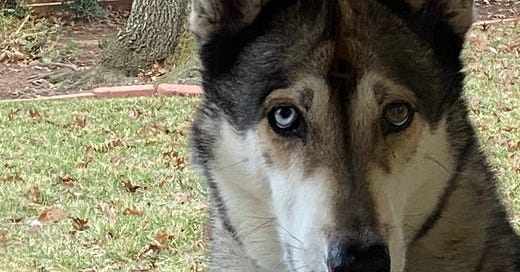




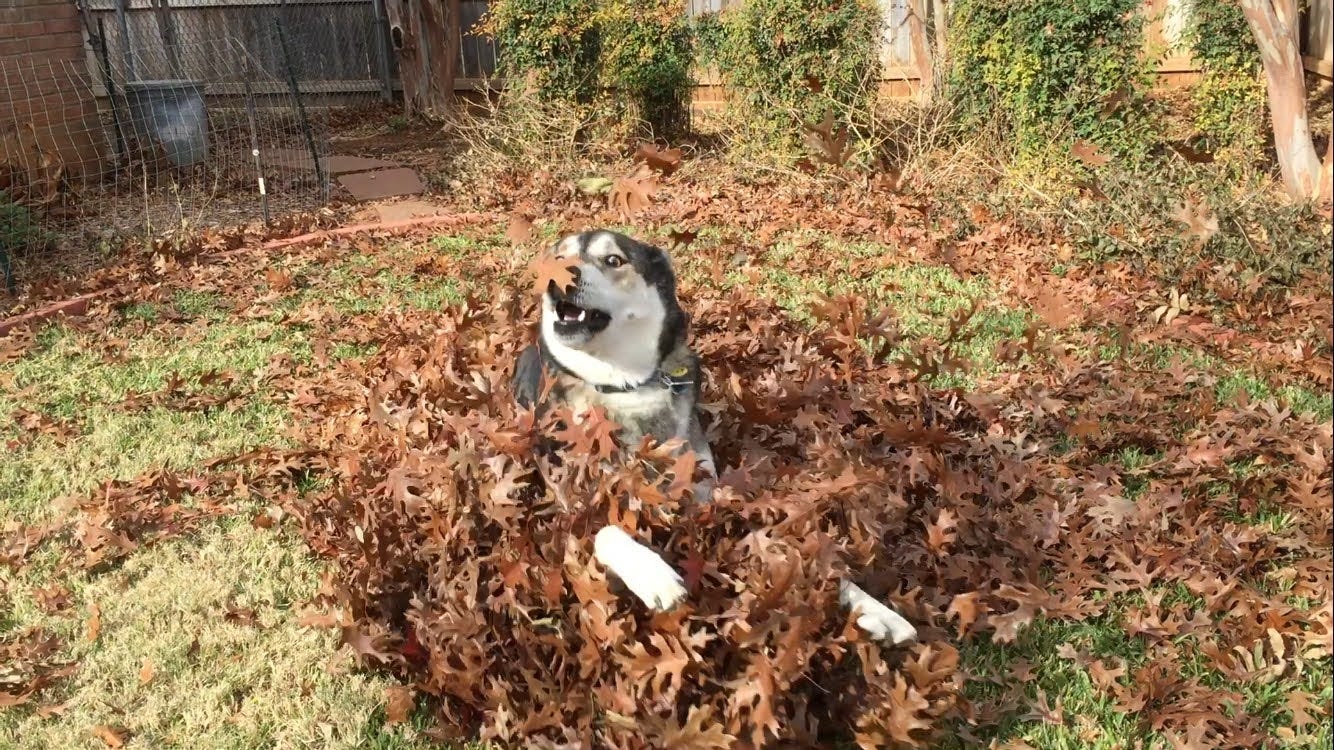
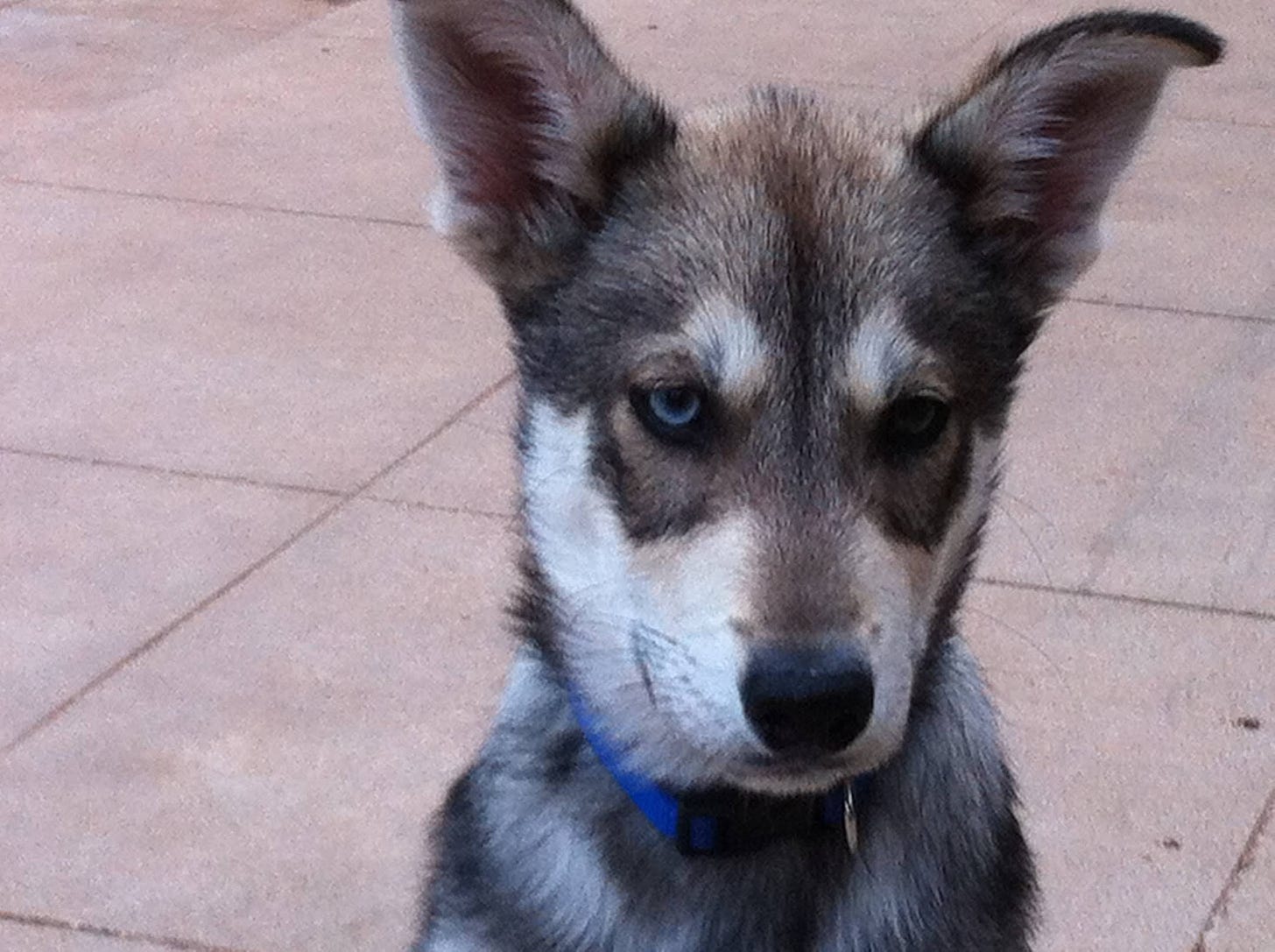
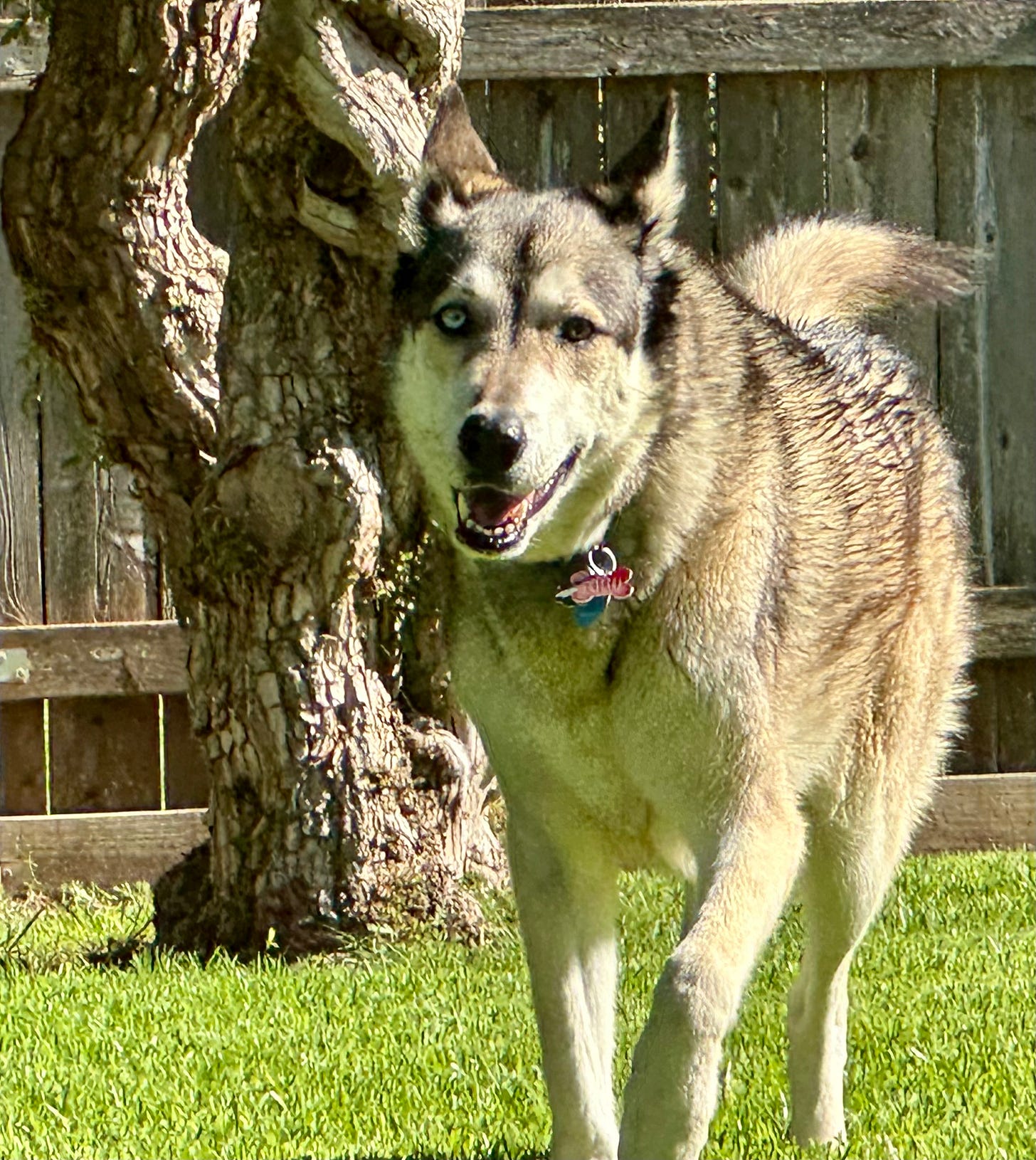
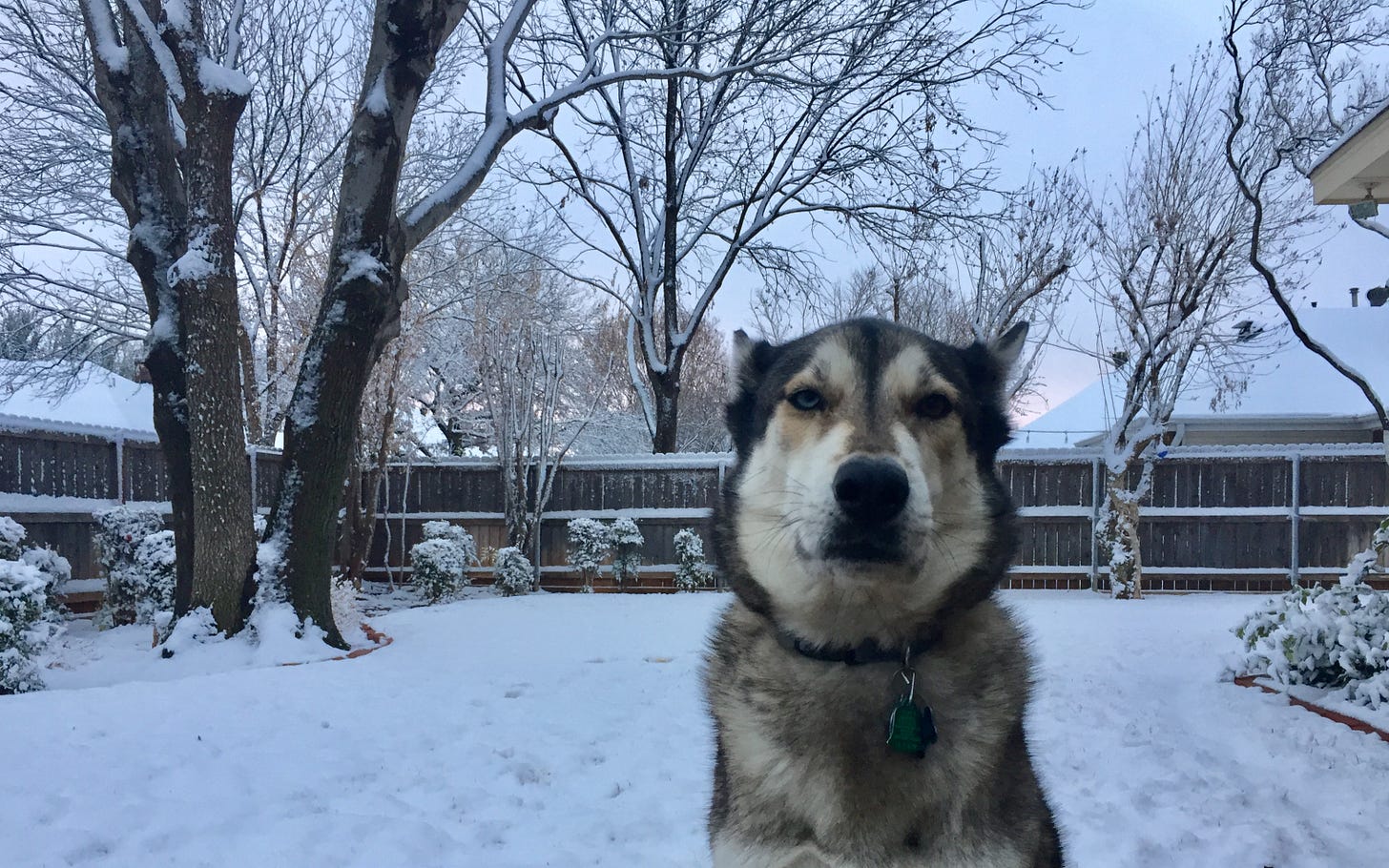
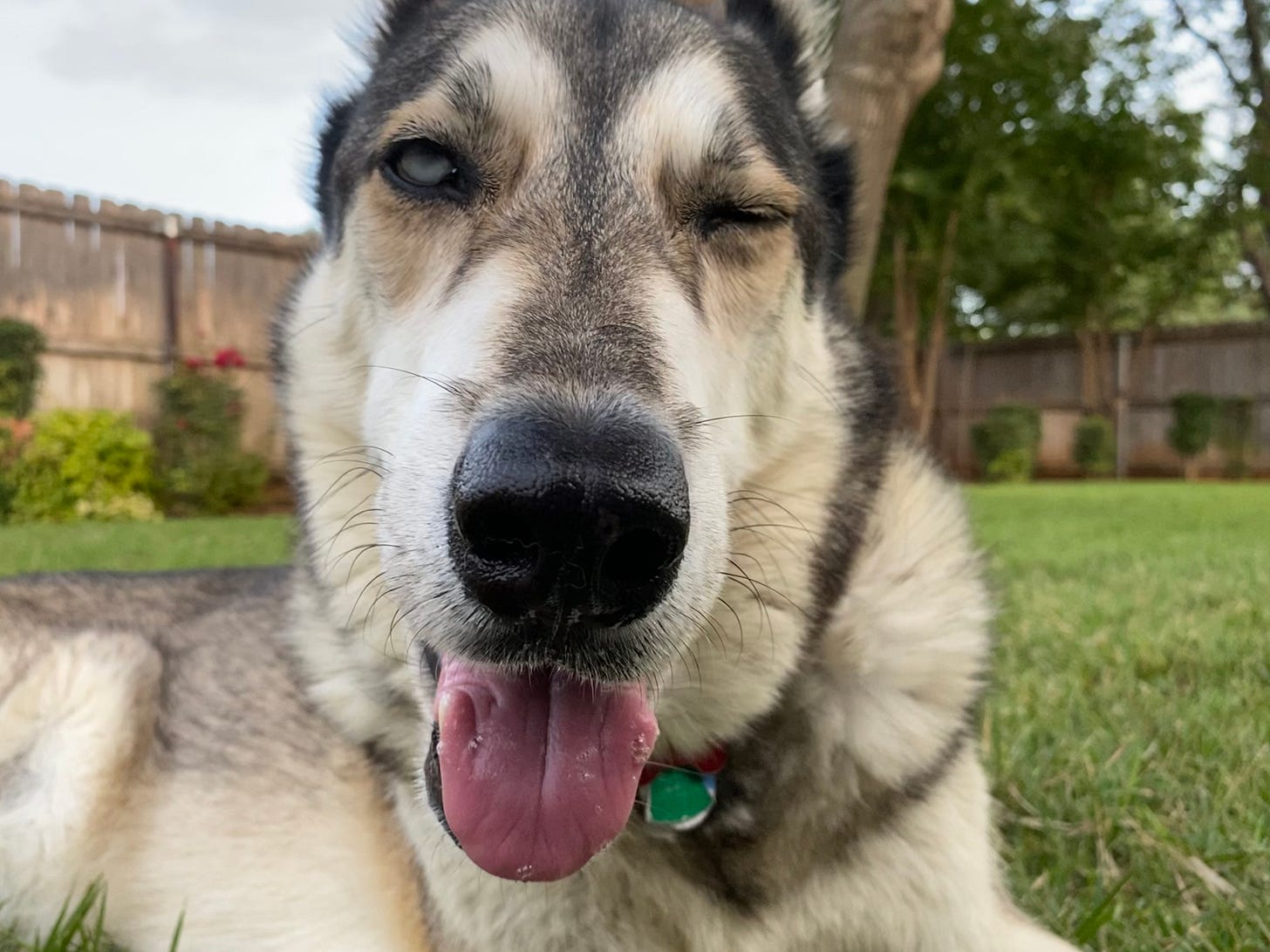
I'm trying that sleep position now...I guess it's not approved for work...or on my desk. I'll try again tonight.
Togo, I like all your parts, especially all those parts which make you you. Have you considered running one of those DNA tests on your Daddy?
Now that I think of what I've asked, perhaps you shouldn't. Some things are better left undone, though I think regardless of what such a test might reveal, you did an excellent job of picking your Daddy. Good job, Togo.